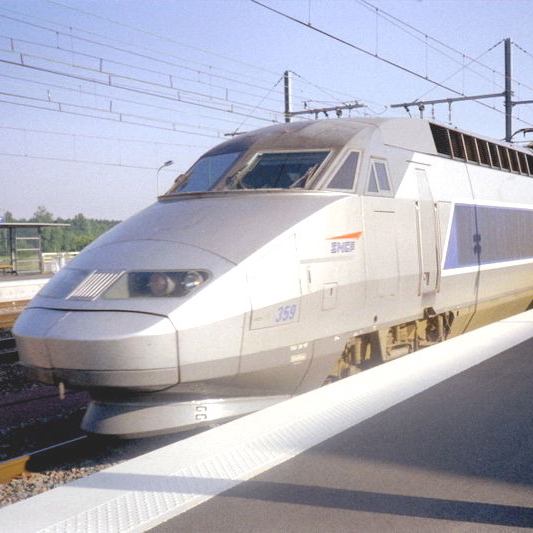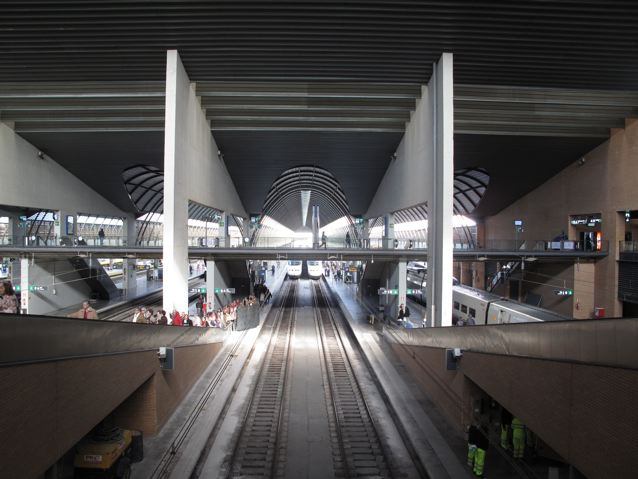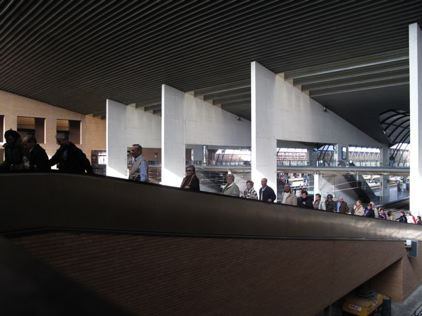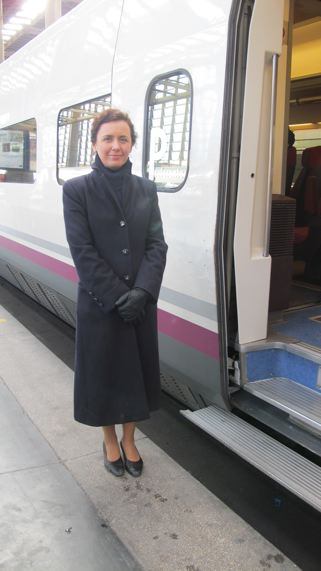Travel Tips
Trains in Spain: A High-Speed Rail Review
 The golden age of train travel may be long gone in the U.S., but Europe’s efficient rail system continues to transport travelers of all budgets across the continent. Veteran train traveler Irvina Lew reports on her experiences riding the rails through Spain.
The golden age of train travel may be long gone in the U.S., but Europe’s efficient rail system continues to transport travelers of all budgets across the continent. Veteran train traveler Irvina Lew reports on her experiences riding the rails through Spain.
Trains intrigue me, perhaps because Bob, my late husband, used to love train travel.
After trips to Chicago, he’d share stories about the interesting people he met on the overnight from Penn Station.
We rode the rails as often as possible, from Manhattan to Washington, DC, from Whistler to Vancouver and Paris to Lyon.
I discovered the luxurious life on the Venice Simplon Orient Express (Venice to London), the cosmopolitan charm of the Chunnel-crossing Eurostar, the spectacular seaside scenery (the Mediterranean and the Pacific), the rugged mountains (the Alpes and Canadian Rockies) and the verdant countryside (Burgundy, Bordeaux and Tuscany).
Will High-Speed Rail Corridor Rankings Mean More Trains In Your City?
These days, while chug-a-lugging on the Long Island Rail Road for 73 minutes (it’s 40 miles between home and Manhattan) I recall the speed from Paris to Reims, 81 miles, in less than an hour. So, when my friend Cara, suggested visiting Andalusia, I proposed: “Let’s travel by train; I’ve never been on the high-speed trains in Spain.”
 We planned to meet for a week after my trip to Barcelona: Madrid to Seville, Granada, Cordoba and back to Madrid. We both researched Rail Europe’s Web site and decided that Eurail passes with advance seat reservations made sense (though they are less necessary off season).
We planned to meet for a week after my trip to Barcelona: Madrid to Seville, Granada, Cordoba and back to Madrid. We both researched Rail Europe’s Web site and decided that Eurail passes with advance seat reservations made sense (though they are less necessary off season).
I proposed traveling afternoons, around 2 p.m.—when all of Spain is at lunch and many places close for siesta; that way, we had full mornings free, time for a restful two to three-hour train trip and an arrival when rooms should be ready for check-in, and still have hours to explore and go out for dinner (not before 9 p.m. in Spain).
With a four-day per month Eurail pass settled, we decided to travel AVE second class and paid $16 for seat reservations. Even in second class, there were headphones for entertainment available for free.
Learn more about traveling in Spain:
I chose a first-class trip from Barcelona to Madrid to see what the price differential bought. The $38 included three attendants—one stationed at the car door when I arrived—who were responsible for headphones, newspapers (in Spanish), a meal (with wine), and trash disposal. The first-class car was also far less crowded than the others, though there’s no way to know if that was coincidental because I took the train at 3 p.m. on a Saturday when most travelers might already have been where they were headed.
What impressed me on this, the newest AVE route, was the moving neon sign that announced the stations and the speed: it reached 300 kilometers per hour (about 225 mph). WOW!
 Each of the train terminals are in city centers and close to hotels, so we never paid more than about $10 for taxi rides. They are all high-tech, easily navigated with international signage and boards listing arrivals and departures. Tickets are checked at the gate exactly 30 minutes before the precise departure; luggage and outer garments are scanned there, too.
Each of the train terminals are in city centers and close to hotels, so we never paid more than about $10 for taxi rides. They are all high-tech, easily navigated with international signage and boards listing arrivals and departures. Tickets are checked at the gate exactly 30 minutes before the precise departure; luggage and outer garments are scanned there, too.
Best among the civilities are the slanted, moving sidewalks that connect train platforms to the terminal that make pulling luggage or pushing a cart easy. And, there were carts readily available (Carts require a €1 coin deposit which gets refunded when the cart is returned). On trains, some seats face each other, all have tables for meals or a computer and every car has luggage compartments and a lavatory.
Learn more about train journeys in our Train Travel section.
On these trains, large, clean windows offer a “sense of place” and our journeys incorporated views of rocky hillsides, olive and orange groves, white stucco homes and red-tiled-roofs. Closer to the city centers, there are ordinary apartment complexes, in the countryside more appealing and sprawling farms.
 In Spain—where trains leave precisely at the scheduled minute—we encountered one caring conductor who spoke individually to each passenger explaining that the train was behind schedule, needed to make up time and would be in the station for only a couple of minutes (instead of, maybe, four or five). He was one of a few caring train employees that I’ve met.
In Spain—where trains leave precisely at the scheduled minute—we encountered one caring conductor who spoke individually to each passenger explaining that the train was behind schedule, needed to make up time and would be in the station for only a couple of minutes (instead of, maybe, four or five). He was one of a few caring train employees that I’ve met.
Once, when my computer unhooked and fell off my luggage while boarding a TGV, the conductor called Gare Montparnasse, in Paris, and assured me that IF they found it, they’d send it on the same route, tomorrow. He did, however, warn me that someone might already have stolen it: “Il ne faut qu’une.” (It only takes one!) Happily, it arrived the next morning.
On another trip, a Parisian porter surprised me and my husband when he was waiting for us at the car door after our return to Paris from Biarritz. He had examined our tickets (each is stamped with the train, car and seat numbers) the week before when we left Paris and announced, “Next Sunday, I’ll be there.” Much to our joy, he was.
Like arched-gates in past centuries, train terminals are entries into the lifeline of a city. In Spain, their 21st century speed and technology transported us from Madrid’s 19th century grace to Andalusian splendor that dated to the 8th century.
Do you think it will ever happen here in America?
By Irvina Lew for PeterGreenberg.com. Irvina Lew is a writer who specializes in travel and spas. She is also the author of Romantic Weekends In and Around New York.
PeterGreenberg.com Links:
- Obama’s State of the Union & High-Speed Rail Projects
- Will High-Speed Rail Corridor Rankings Mean More Trains In Your City?
- President Obama Makes the Effort to Improve America’s Train System
- Five American Train Trips You Shouldn’t Miss
Learn more about traveling in Spain:












